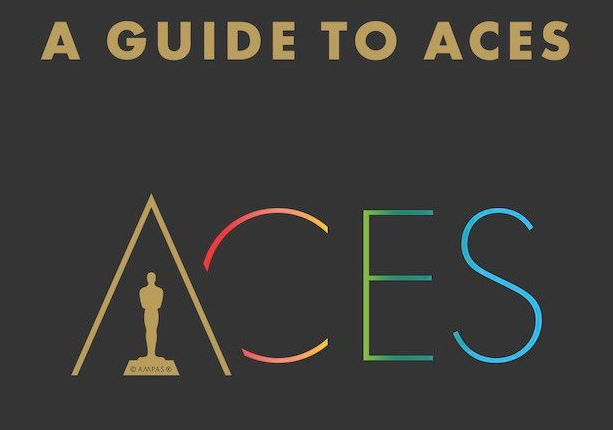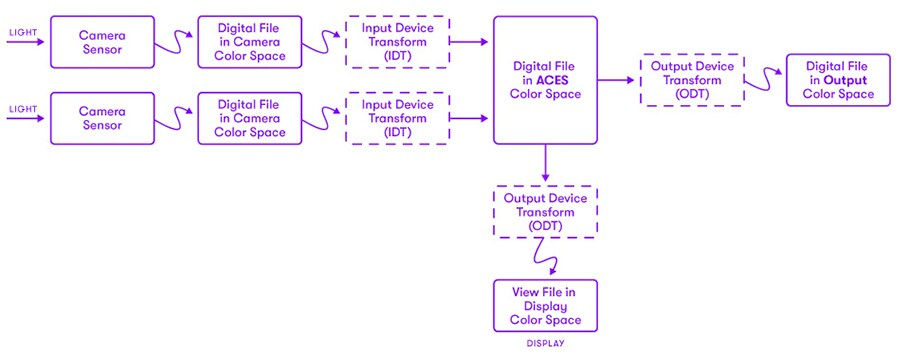Understand ACES to 3 Different Levels of Complexity

What is ACES colour management and how does it work?
Is it better than Resolve Color Management (RCM)?
Should you even use ACES?
We’ll answer all of these questions and more in this short guide to understanding ACES in Post Production.
Where to learn ACES?
An obvious place to start would be ACES’s own site – ACEScentral.com – which has a lot of technical information, as well as some fairly approachable Quick Start Guides and Primers in both English and Spanish.
But there are some other great resources out there to get you up to speed with ACES, which I’ve curated for your education.

This article was originally published as an issue of Cut/daily, a subscription email for Post Pros who want to a learn a little more about Post, every day.
Sign up for free at www.cut-daily.com
ACES (mostly) Explained in 2 minutes
I (hopefully) do a pretty OK job of explaining what ACES is and how it came to be in the this high-level overview I wrote for Avid’s blog.
ACES is a free and open color pipeline standard. The Academy of Motion Picture Arts and Sciences developed it in 2004 in response to the explosion of diverse digital cameras and acquisition formats, which made consistent color management a real challenge.
To manage this complexity, ACES aims to become the standard color management and interchange system for the motion picture and TV industry, and so far, it’s seen success—the standard is beginning to gain real momentum and acceptance in today’s digital productions, with over 500 productions listed on IMDB.com using an ACES pipeline since 2012.
I had more to say than got passed their editors, so it’s definitely ‘the least you need to know’ about IDT’s ODT’s and the like, but a good 2 minute starter.
Why You Shouldn’t Use ACES
In this short video, Freelance Colorist and Trainer Cullen Kelly, talks you through three reasons why you may not even want to use ACES in the first place.
ACES is about accuracy and efficiency not aesthetics so it will not magically make your grades look better but what it may do is allow you to make better grades by offering a more systematic approach.
Cullen Kelly, Colorist
ACES Explained (in Under 60 Minutes)
In this four part series Cullen Kelly does a fantastic job of explaining both the nuts and bolts, and the nuances and problem solving procedures of working in the ACES colour space.
- ACES Explained – Part 1 – Foundational principles
- ACES Explained – Part 2 – Setting up an ACES workflow
- ACES Explained – Part 3 – Grading effectively in ACES
- ACES Explained – Part 4 – ACES vs RCM
If grading in ACES or working within an ACES pipeline is something in your near future, then taking less than a lunch break to digest this information will set you up for success.
Using ACES Colour Management in Resolve (< 30 mins)
I shared this tutorial in this article on 17 Hours of Free DaVinci Resolve 17 Training, which once again features Cullen Kelly, dropping some more colour management knowledge.
This is a condensed version of the four part course above, and these timestamped links will take you to the relevant sections:
- Working in the ACES Colour Space
- Working in Resolve Colour Management (RCM) v2
- Which one should I use? (Comparing ACES vs RCM)
Yet More Insights on Working in ACES
If you’d like to read your way through some further ACES insights from Mixinglight.com, here’s a four-part series to get you started:
- Getting To Know Aces Part 1
- Getting To Know Aces Part 2
- Getting To Know Aces Part 3
- Getting To Know Aces Part 4
So remember, hold those ACES and cut daily.






This may help:
https://www.lightillusion.com/what_is_aces.html